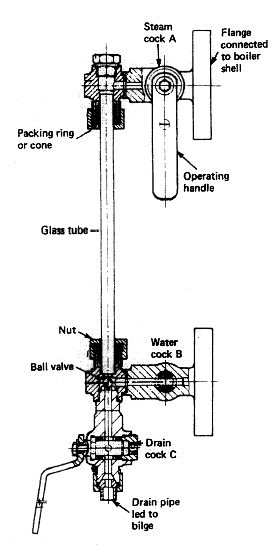
Water Level Gauges for Marine Boiler
The water level gauge provides a visible indication of the water level in
a boiler in the region of the correct working level. If the water level
were too high then water might pass out of the boiler and do serious
damage to any equipment designed to accept steam. If the water level
were too low then the heat transfer surfaces might become exposed to
excessive temperatures and fail. Constant attention to the boiler water
level is therefore essential. Due to the motion of the ship it is necessary to
have a water level gauge at each end of the boiler to correctly observe the
level.


